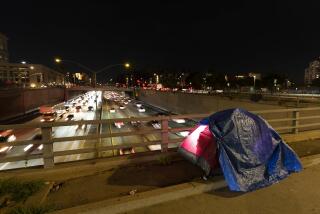How the Supreme Court Feeds a Rumor
PASADENA â For the last few years, a flagrantly untrue rumor that African Americans will be disfranchised in 2007 has been circulating on the Internet, surviving innumerable efforts to deny it and even a full-scale press conference by the Congressional Black Caucus.
The factual basis for the rumor is that two important parts of the 1965 Voting Rights Act are scheduled to expire in 2007, unless Congress extends them by that time. The two key parts are Section 4, which bans literacy tests, and Section 5, which requires officials in certain states and counties, mostly in the South, to clear new election laws with the Justice Department before putting them into force. But even the expiration of these sections would not disfranchise blacks, because the 15th Amendment, which bans restrictions on voting âon account of race, color or previous condition of servitude,â is part of the U.S. Constitution, and there is no prospect of outright repeal.
Why, then, does the rumor persist?
In large part, its persistence is due to a general unease created by continuing assaults on affirmative-action policies and, especially, on minority political power, spearheaded by the conservative majority on the U.S. Supreme Court. A case argued before the court last Wednesday, Reno vs. Bossier Parish School Board, illustrates the trend.
Section 5 of the Voting Rights Act requires that, before an election law from one of the âcovered jurisdictionsâ can go into effect, the Justice Department or the district court of the District of Columbia, must determine that it âdoes not have the purpose and will not have the effect of denying or abridging the right to vote on account of race or color.â In a 1976 case, the Supreme Court ruled that an election law couldnât be thrown out under Section 5 unless it actually made minorities worse off (had a âretrogressive effect,â as the court put it) or unless it was intended to discriminate. For example, if a city council contained one district in which minorities constituted a majority, then a new districting plan that kept that single âmajority-minorityâ seat would not violate Section 5, even if other majority-minority districts could have been drawn, as long as the new plan wasnât intentionally discriminatory.
But in 1997, in an earlier version of last weekâs Bossier case, Justice Sandra Day OâConnor suggested that despite the clear language of the law and authoritative interpretations of the Voting Rights Act in Supreme Court decisions dating back to 1966, Section 5 might not prevent a law with a discriminatory purpose, only one intended to make minorities worse off. She returned the case to the lower court for another decision on the facts and more arguments on the law. Though the case arrived back at the Supreme Court in the 1998-99 term, the court put off oral arguments until now and directed the attorneys to focus on whether Section 5 was meant to ban mere discriminatory intent or only âretrogressive intent.â
This may seem an arcane question, full of lawyersâ gibberish and inconsequential to daily life. But it is most certainly not, as an examination of this case reveals. There are 12 school-board districts in 20% black Bossier Parish, a Louisiana school system with a long history of defiance of school integration. In 1991, none of the districts contained a majority of black residents; no black candidate had ever been elected to the board; and though black leaders showed that it was easy to draw two compact majority-black districts, the school board refused to allow even a single one. Yet, when the Justice Department refused to approve these new districts, the Supreme Court overruled the department. In rehearing the case, the district-court judge found that, in the redistricting, the board had shown âa tenacious determination to maintain the status quo,â but it did not âintend retrogression.â That would have been hard to do: There were no majority-black districts before 1991, so the board could not reduce the number below zero.
A second example comes from Georgia. In 1982, none of the 10 congressional districts in the Peach State contained a majority of African Americans, and when the legislature resisted calls to draw a district with a sizable black majority in Atlanta, the Justice Department refused to approve the plan. The state sued, and trial evidence showed that the chairman of the state House Reapportionment Committee had remarked, âI donât want to draw ân-----â districts.â That was enough to convince the district court of the legislatureâs discriminatory purpose. But under a âretrogressive intentâ standard, authorities would have had to allow the plan to go into effect and then sued under the 14th and 15th Amendments, a suit that might have taken nearly a decade, as the Bossier case has.
Since it decided the first âracial gerrymanderingâ case, Shaw vs. Reno, in 1993, the Supreme Court, usually by the same 5-4 majority, has made it much more difficult for minorities than for whites to attain their political objectives. In a series of dizzyingly inconsistent decisions, the âconservativesâ have upended earlier Supreme Court decisions and come within one vote of declaring the Voting Rights Act unconstitutional. As the coming term of the court seems likely to overturn more judicial precedents to add yet another restriction on minority political rights, it is no wonder that rumors of black disfranchisement persist.
More to Read
Get the L.A. Times Politics newsletter
Deeply reported insights into legislation, politics and policy from Sacramento, Washington and beyond. In your inbox three times per week.
You may occasionally receive promotional content from the Los Angeles Times.










